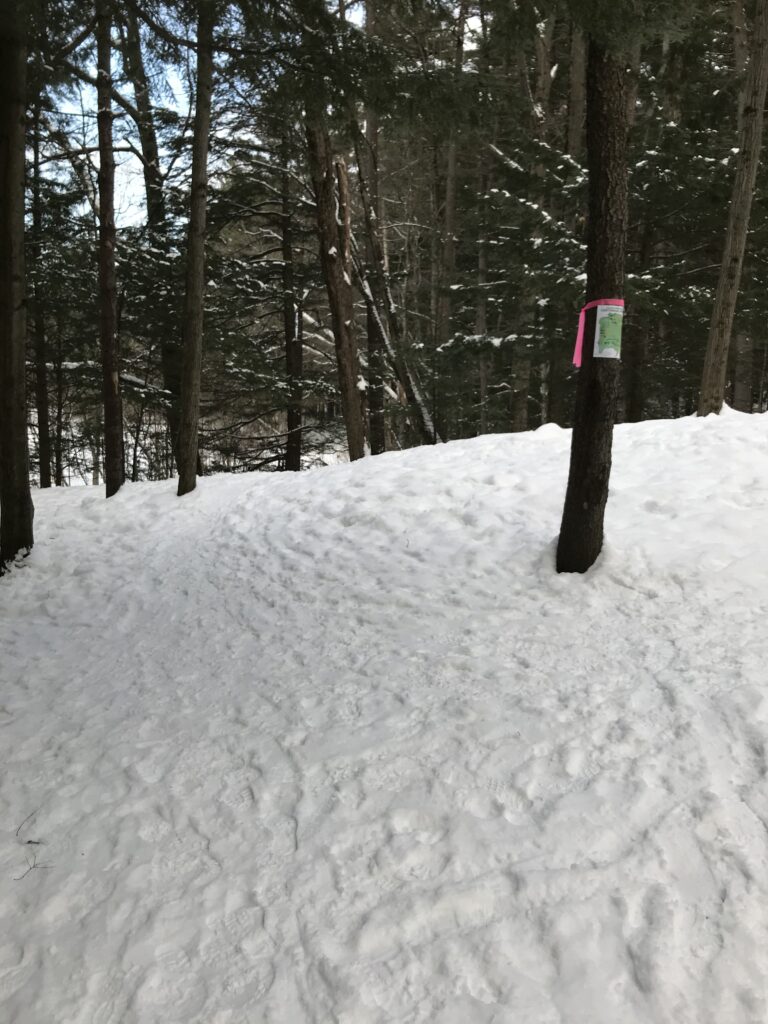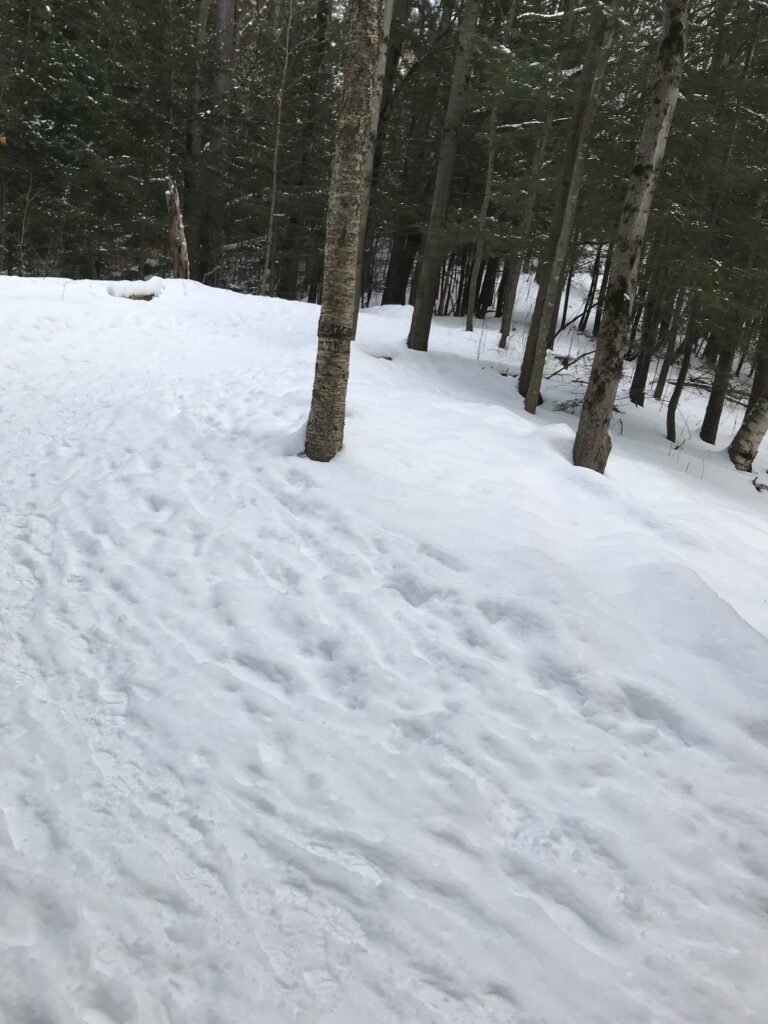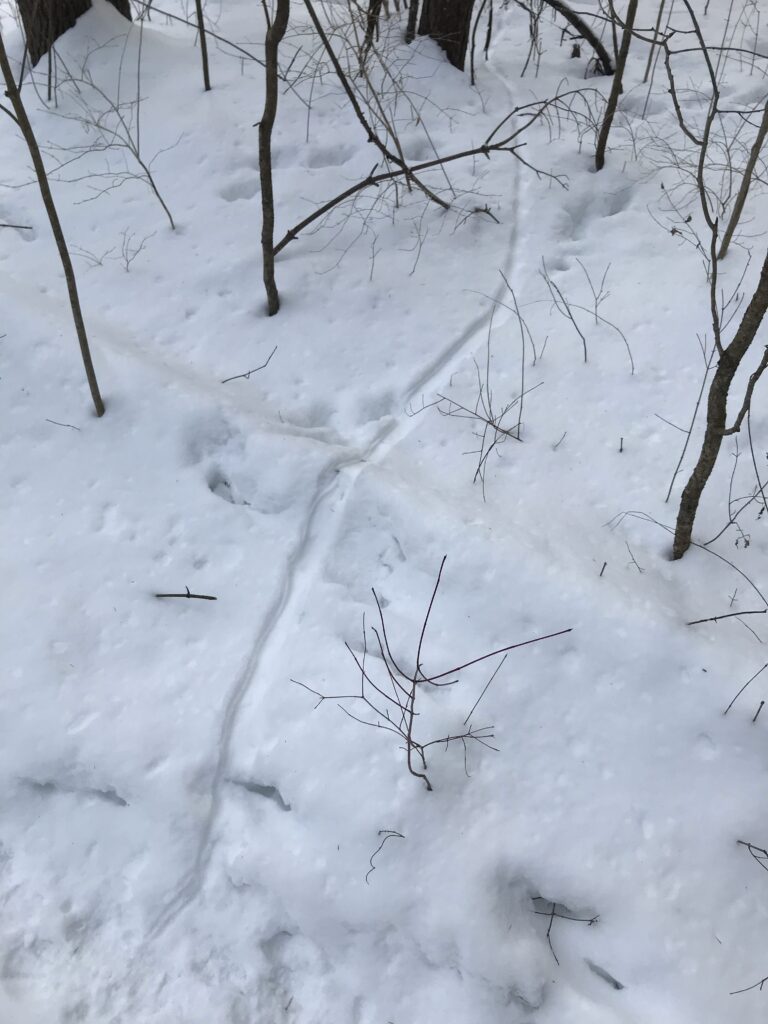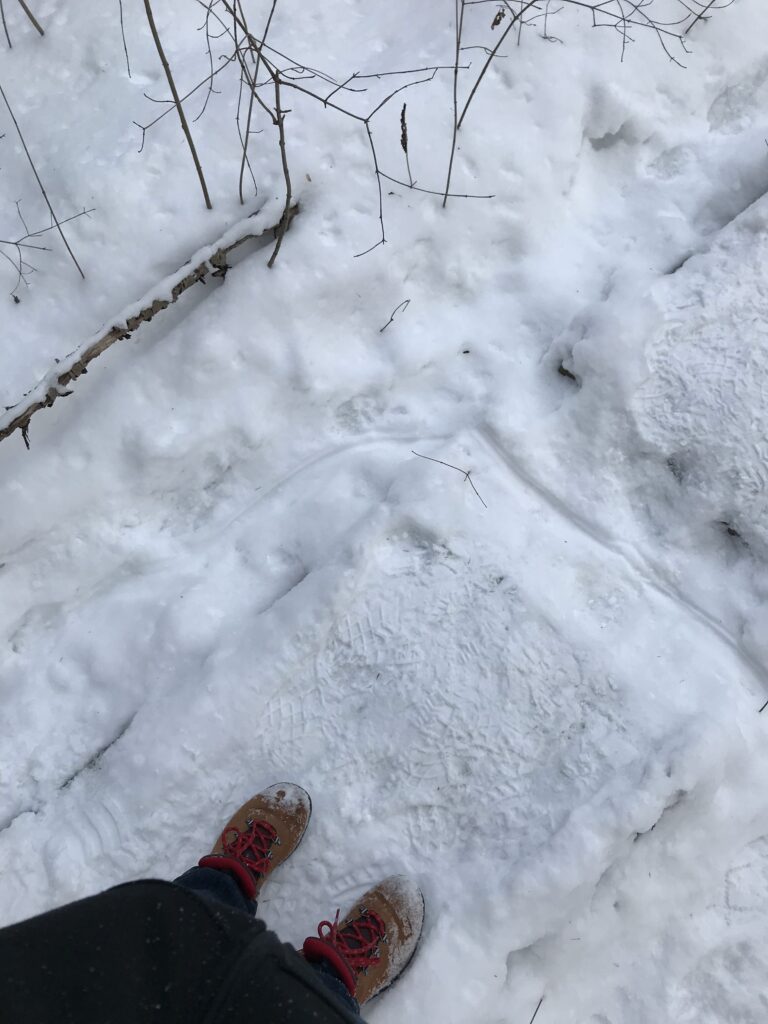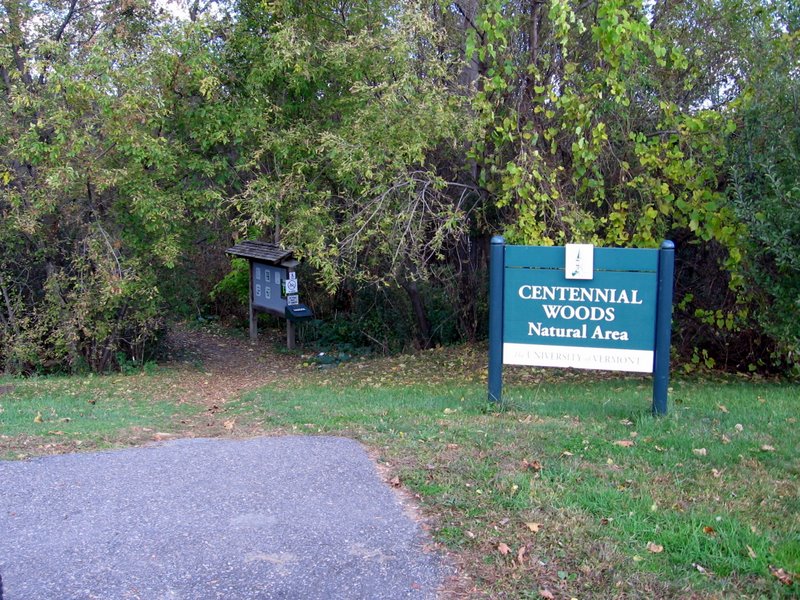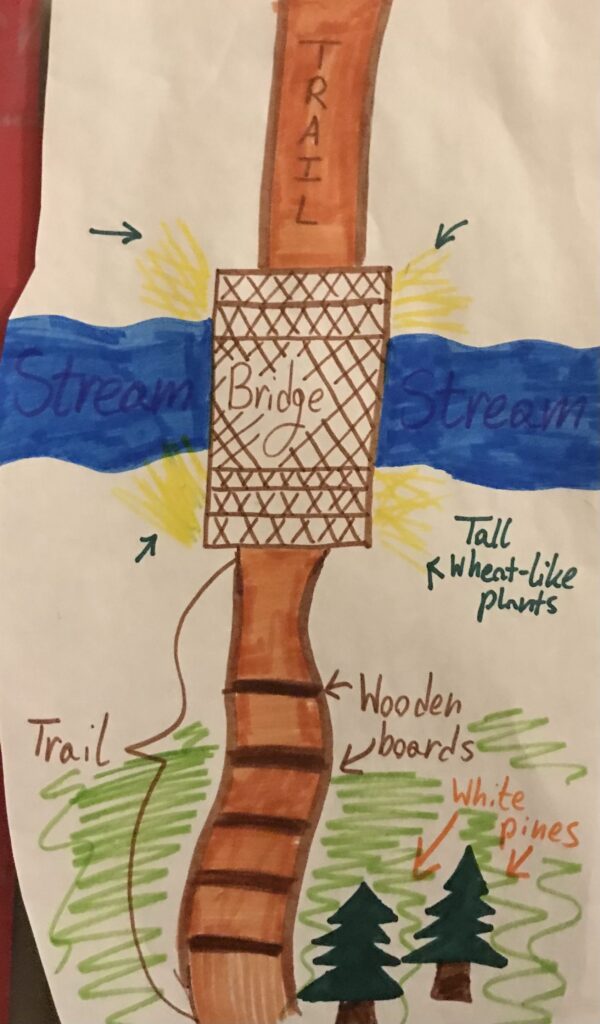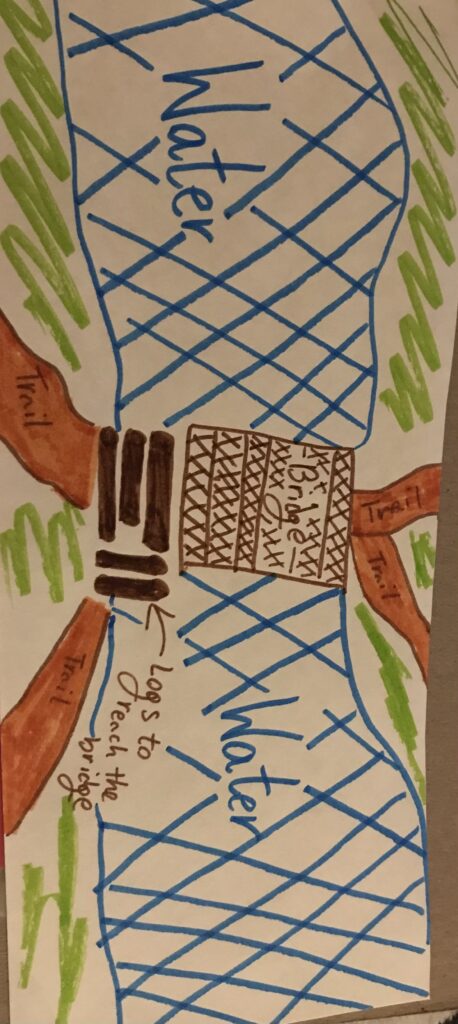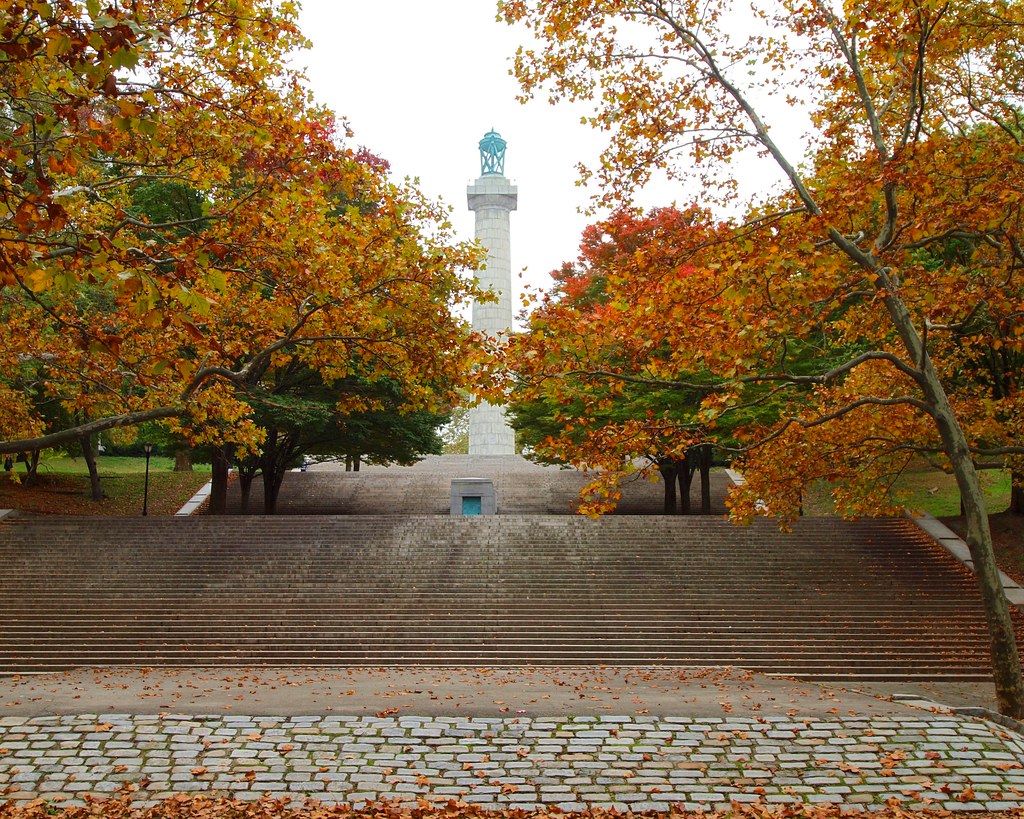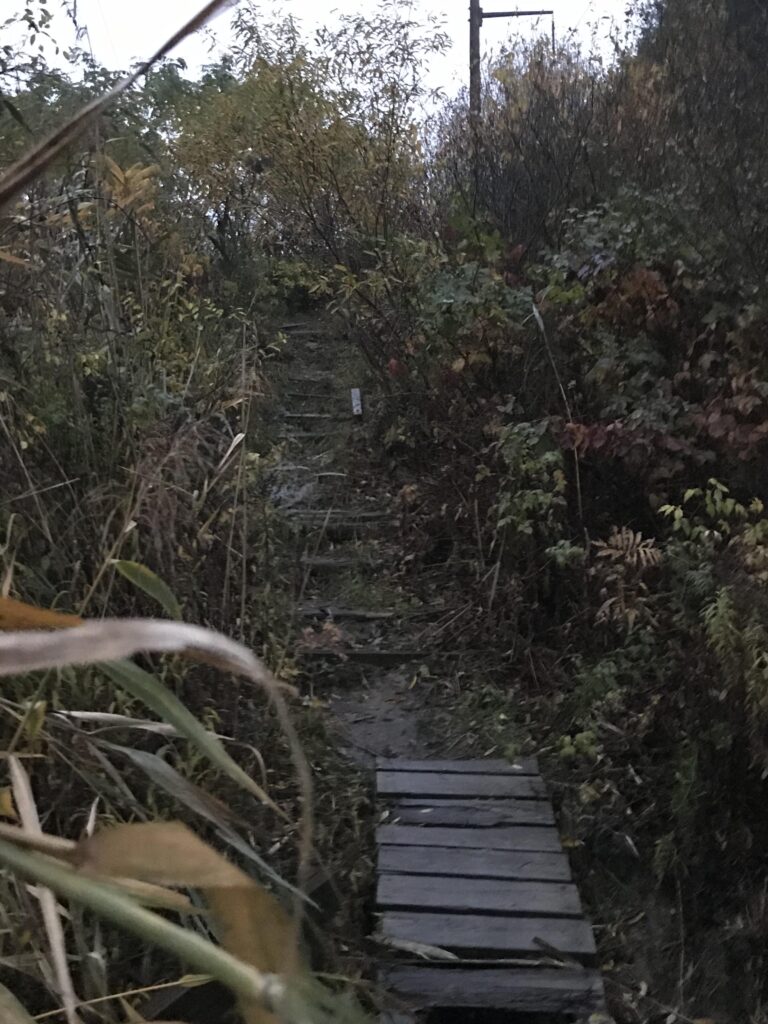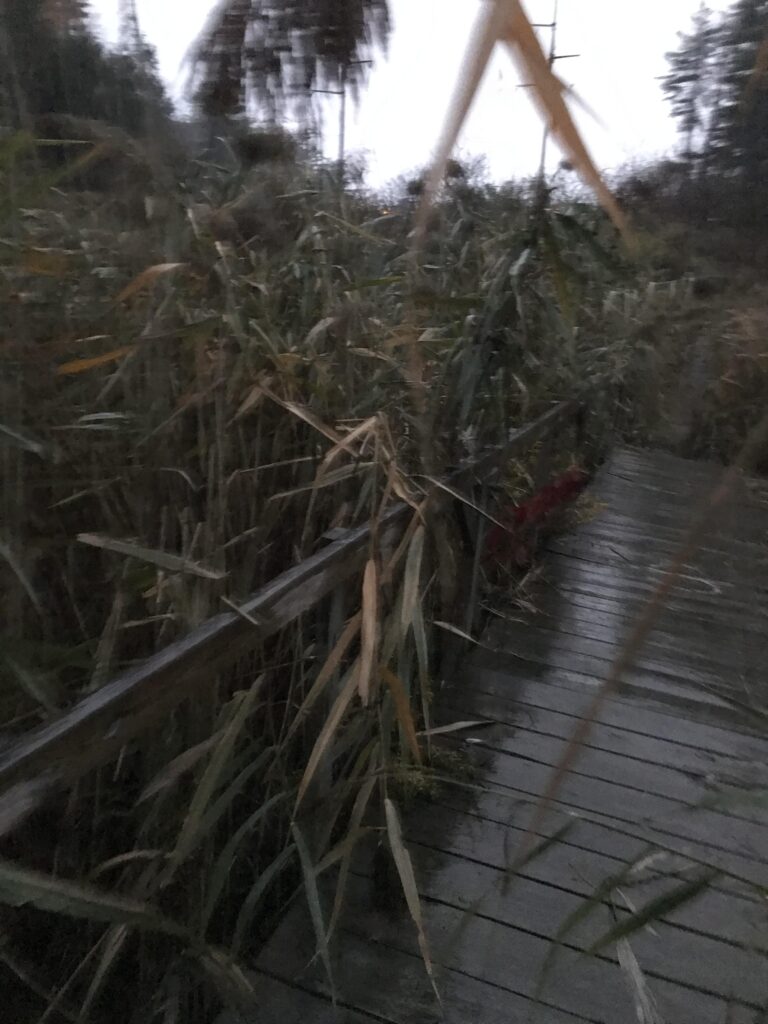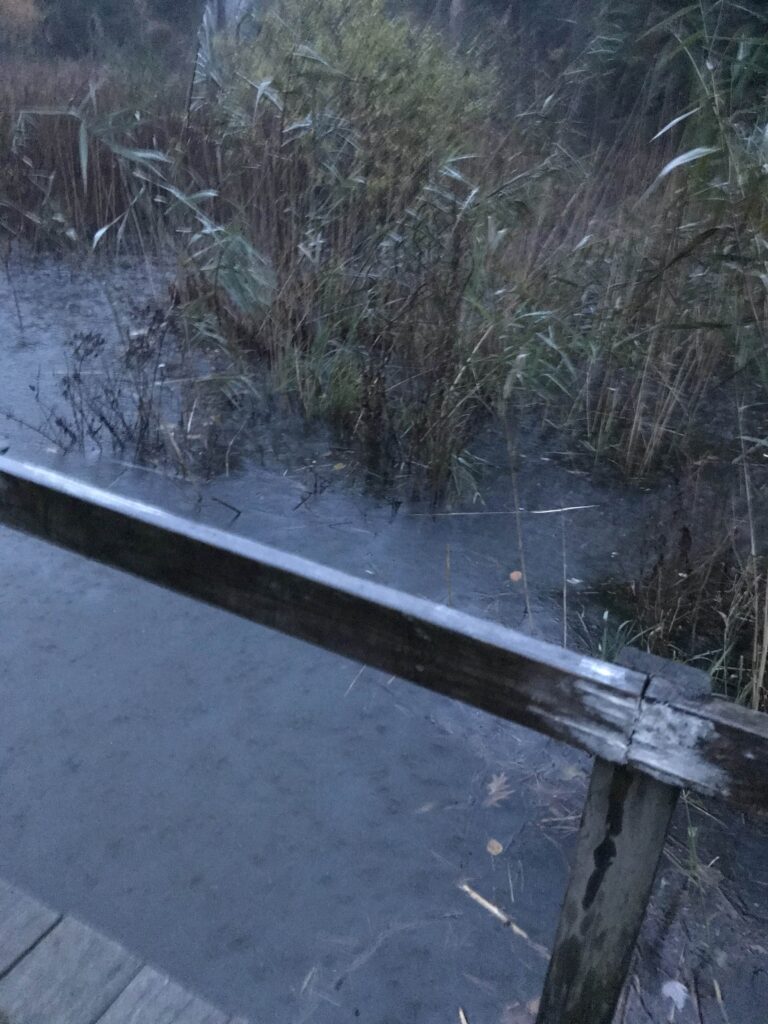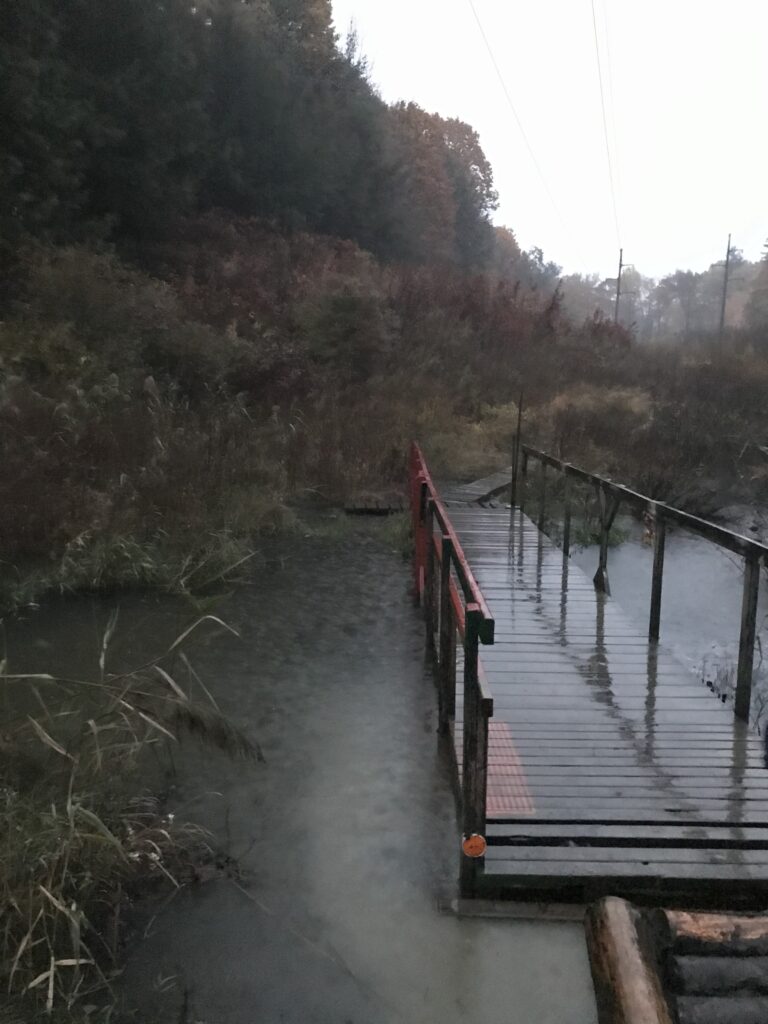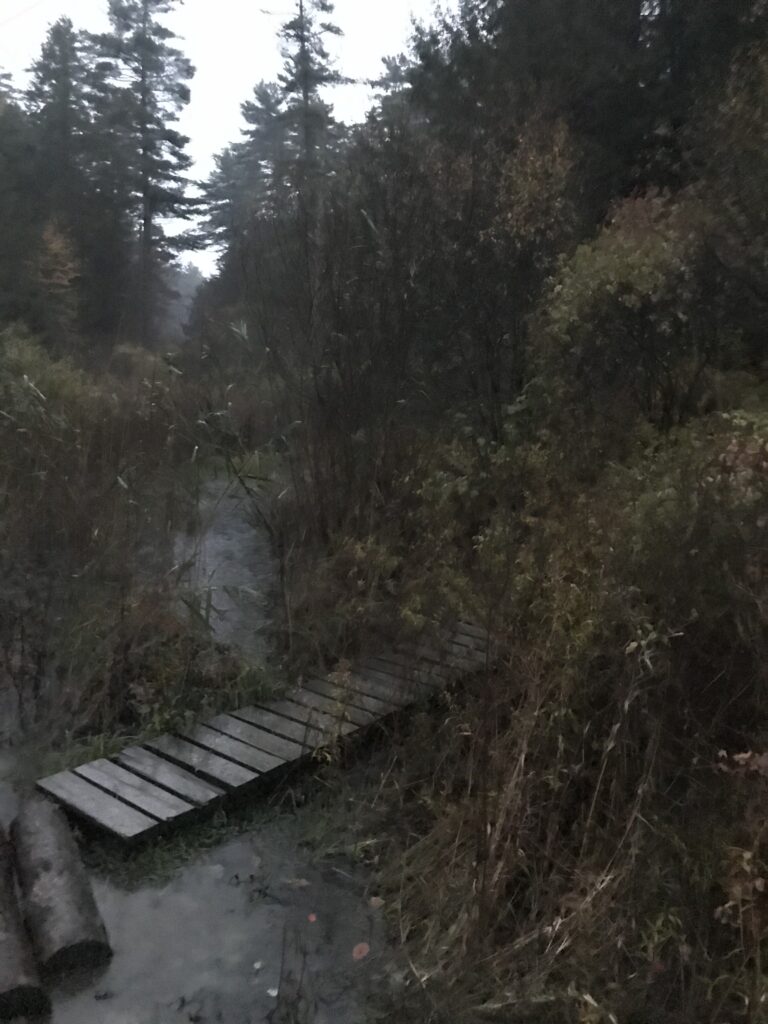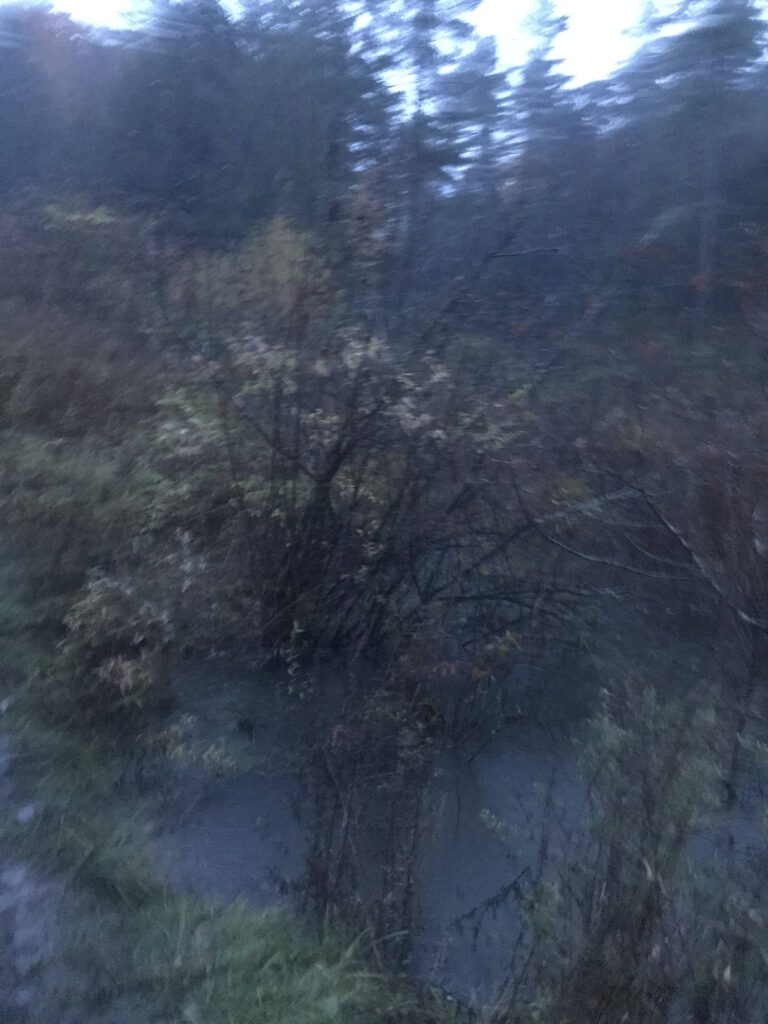On Tuesday (April 13th), some friends and I ventured to Centennial Woods. Because of the nice weather, we decided to explore more than usual. We ended up walking around the woods for over two hours. We began by following the trail and slowly drifting off of it.
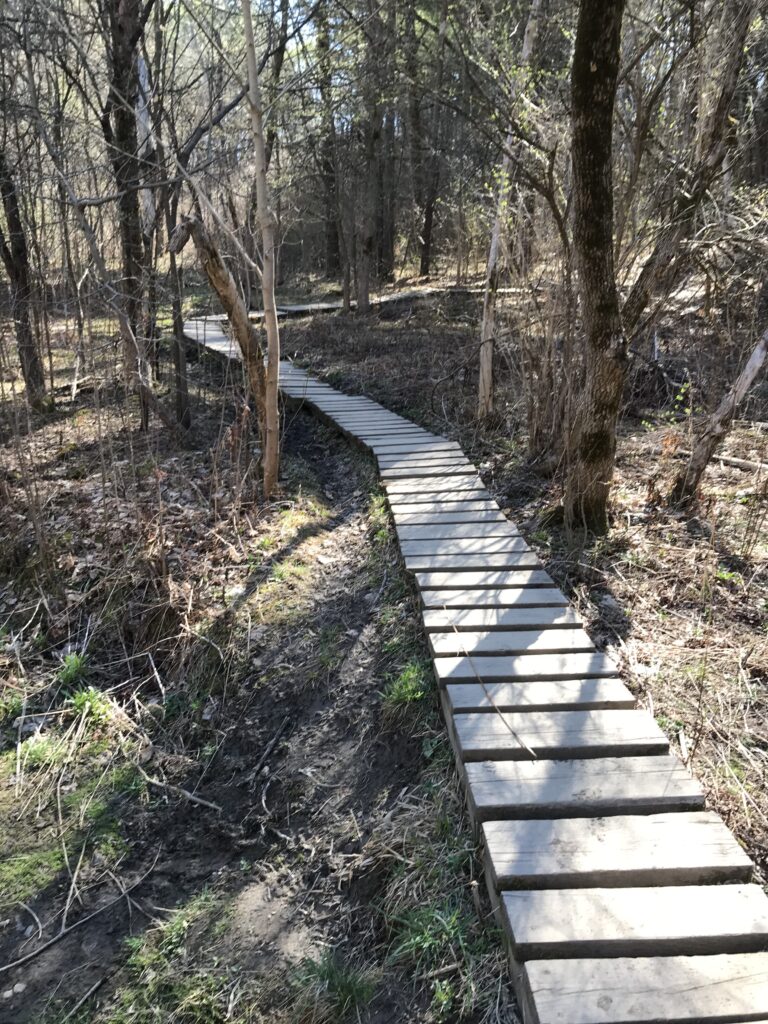
We found a spot nearby the trail that had a deer bones. The bones were covered in moss.
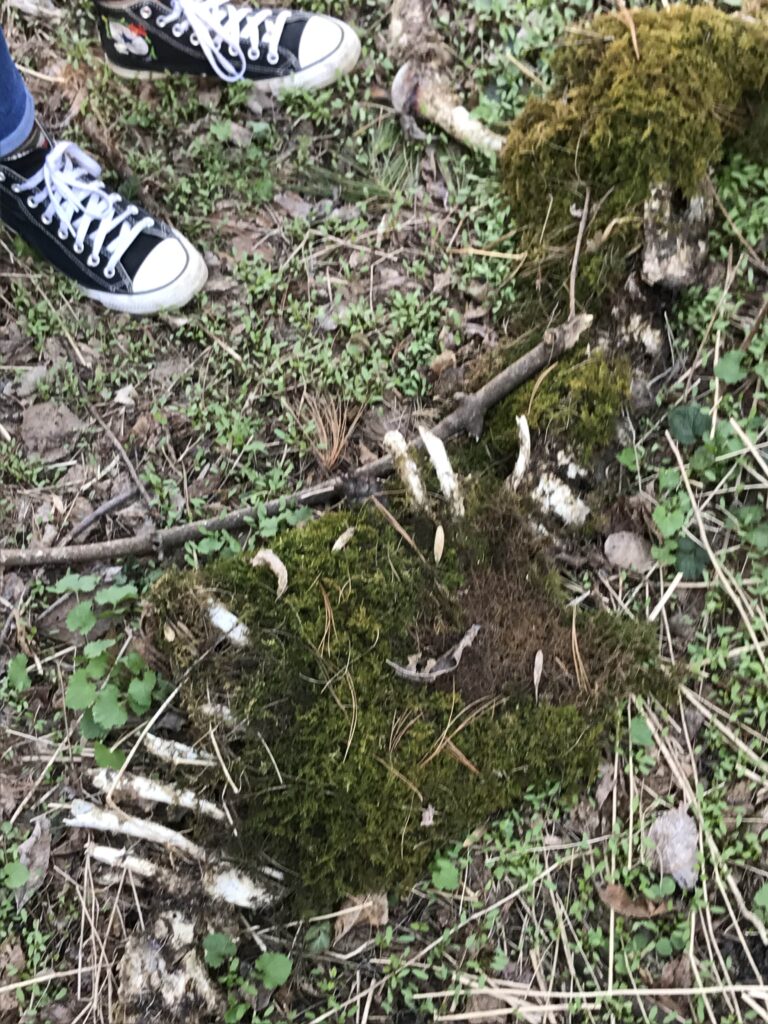
We found a ribcage covered in moss!
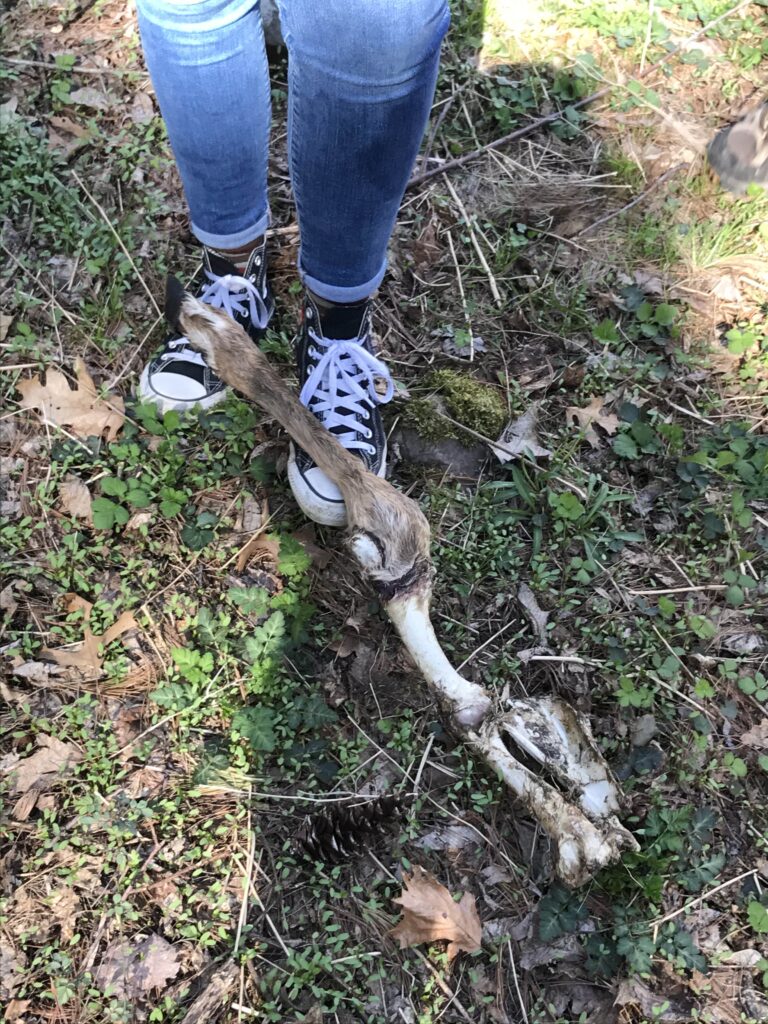
And a leg bone with some fur and the hoof still in tact!
We walked towards a nearby stream shortly after.
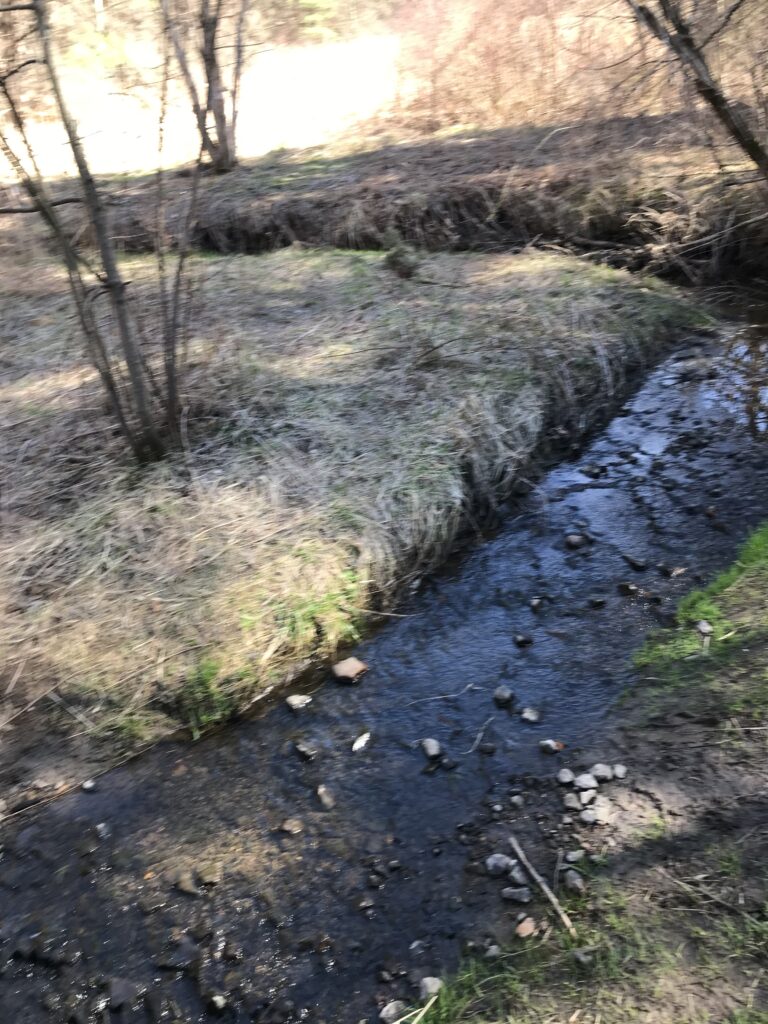
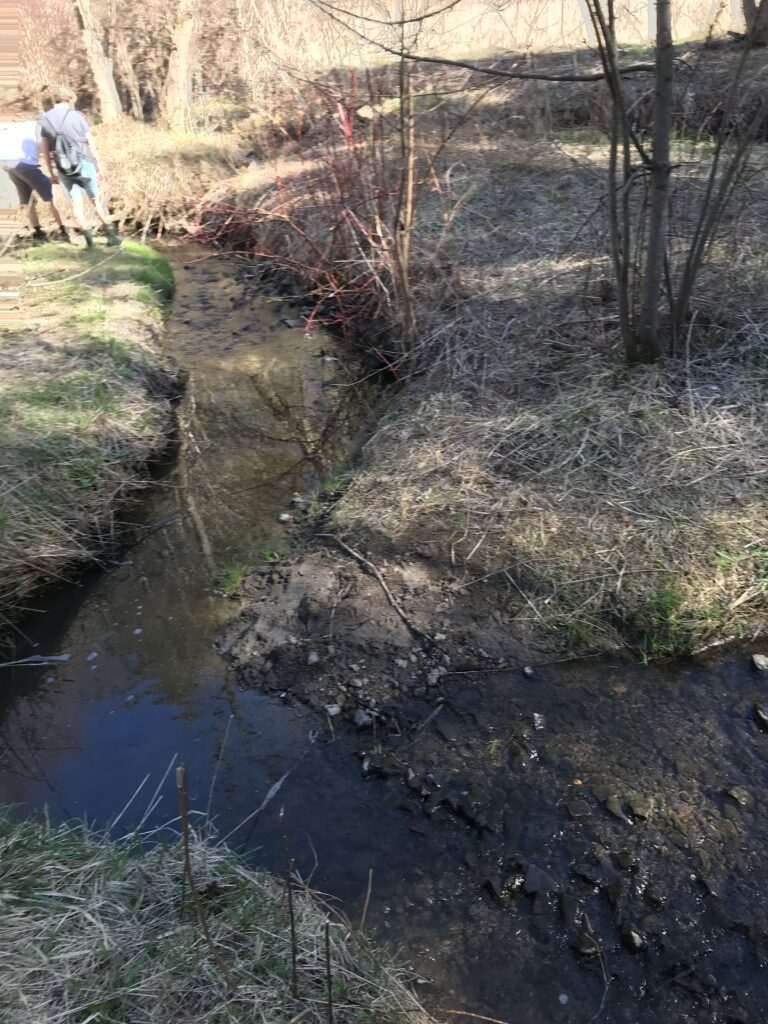
It was super muddy out! Wear shoes you don’t mind getting dirty for a trip like this. After getting our shoes and legs covered in dirt and mud, we started our search for amphibians. And…
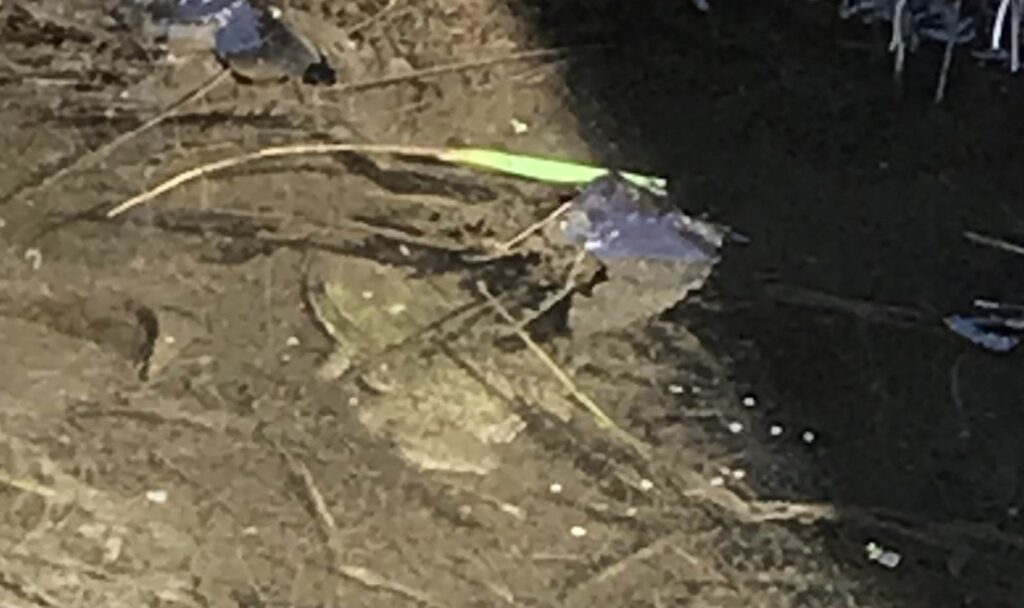
Success! It’s a bit hard to see in the photo above, but there’s a green frog sitting in the river. My friend Erin tried to catch it but it jumped out of their hands as we predicted.
We also found some other fun things in and next to the stream like…
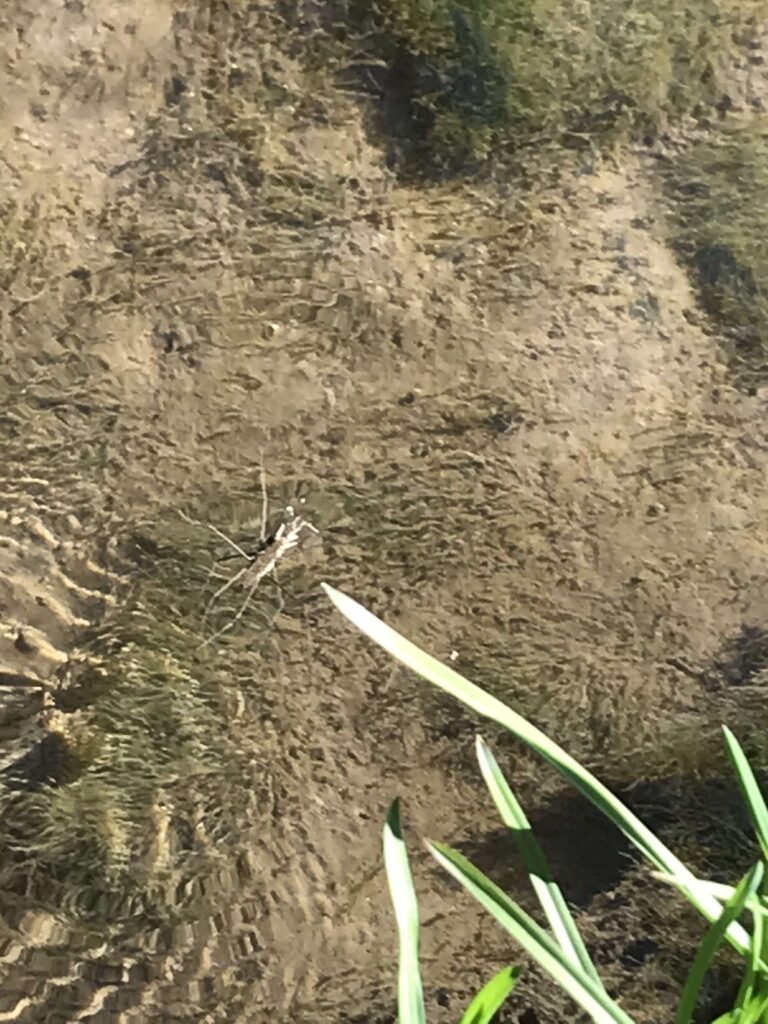
A waterbug!
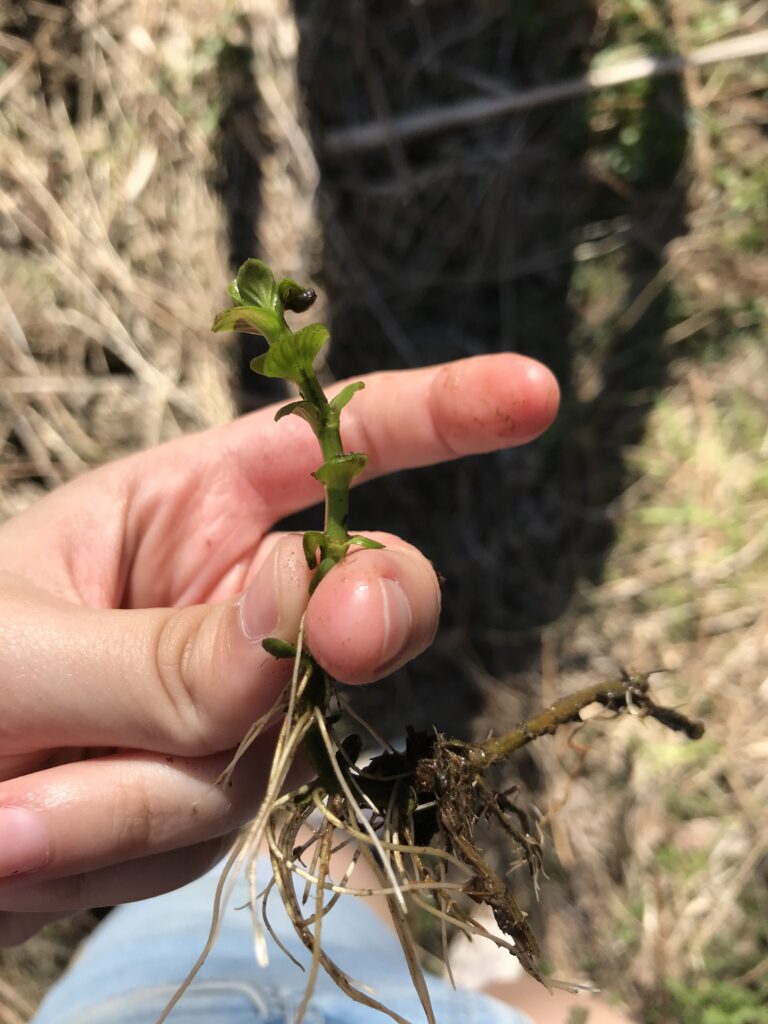
A little plant with a snail living on it!
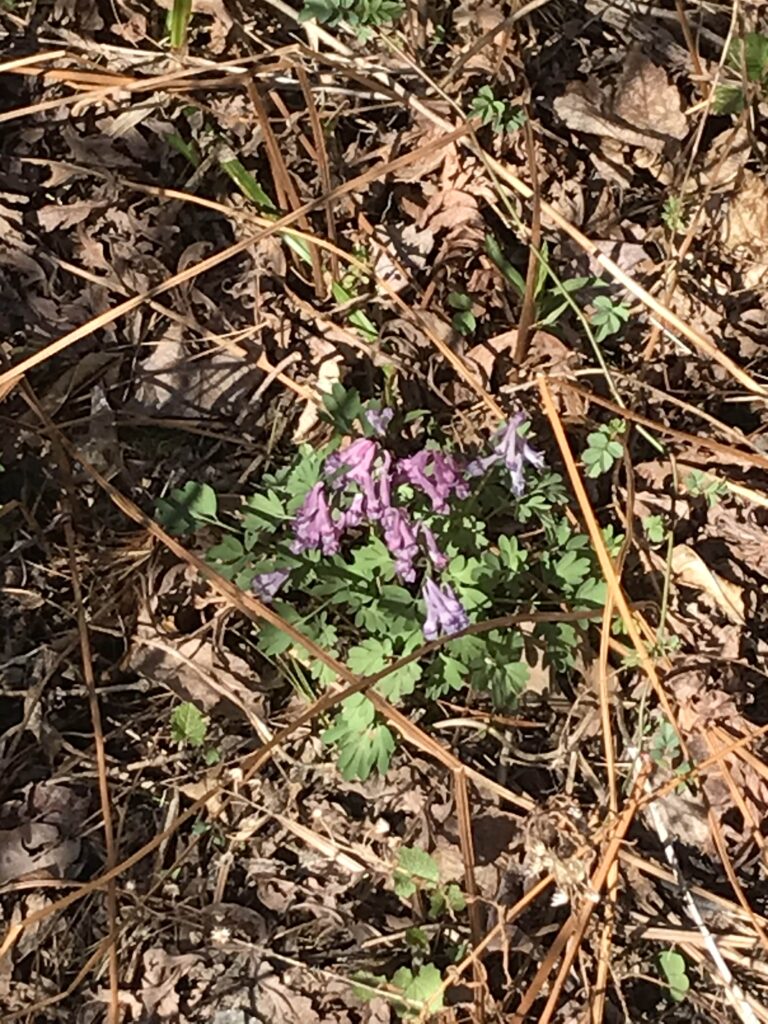
Flowers!
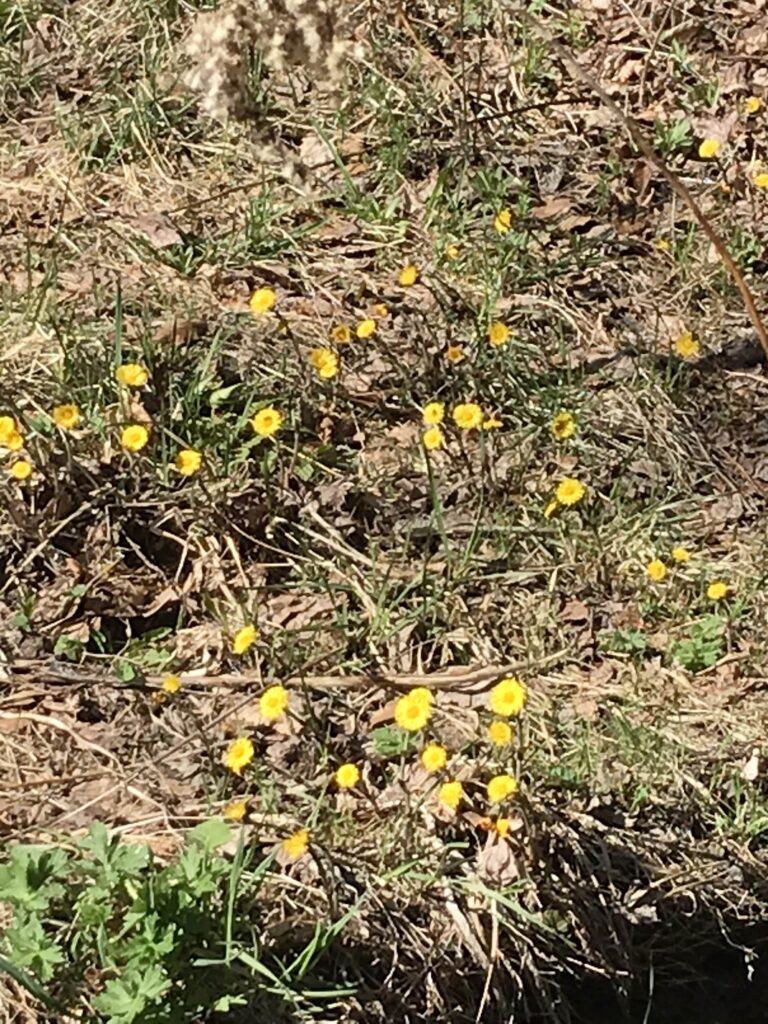
And even more flowers!
Being content with our findings, we moved deeper into the woods. Eventually, we found a spot that had a ton of raccoon and dog tracks!
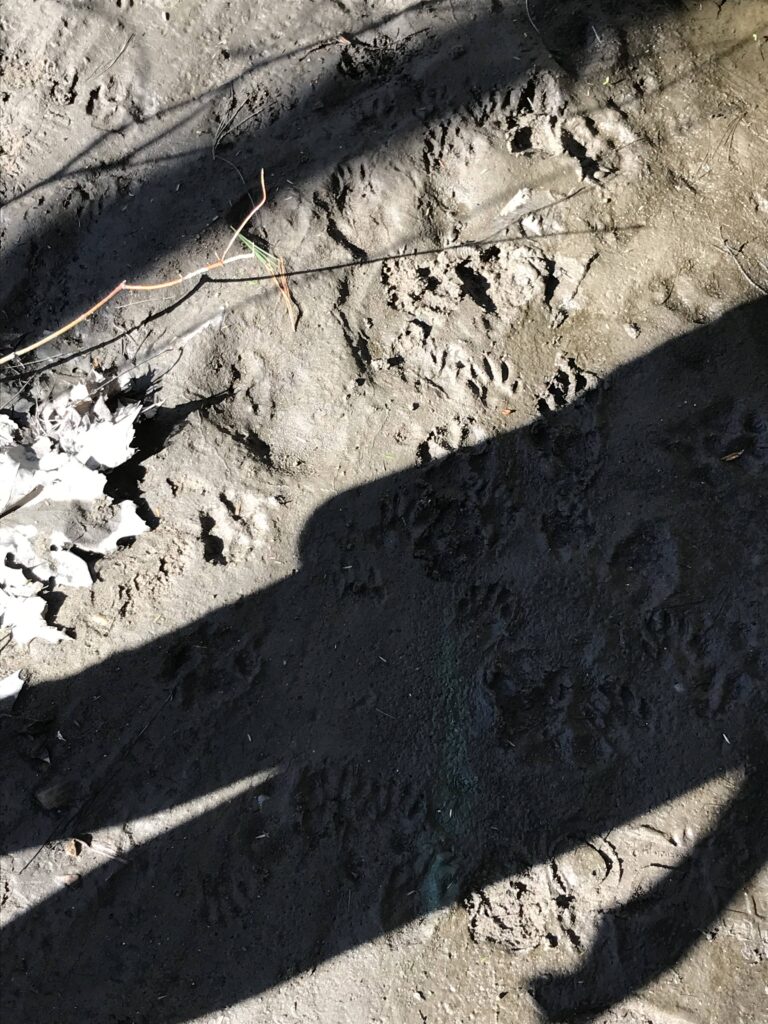
We kept walking until we found this beautiful spot, where the light seemed to hit the trees in the most perfect way. It was very relaxing to sit there and listen to the birds sing (and trust me there was a lot of them singing throughout my whole walk!). I wasn’t able to identify any of them since I don’t know much about bird calls yet and I didn’t see any myself.
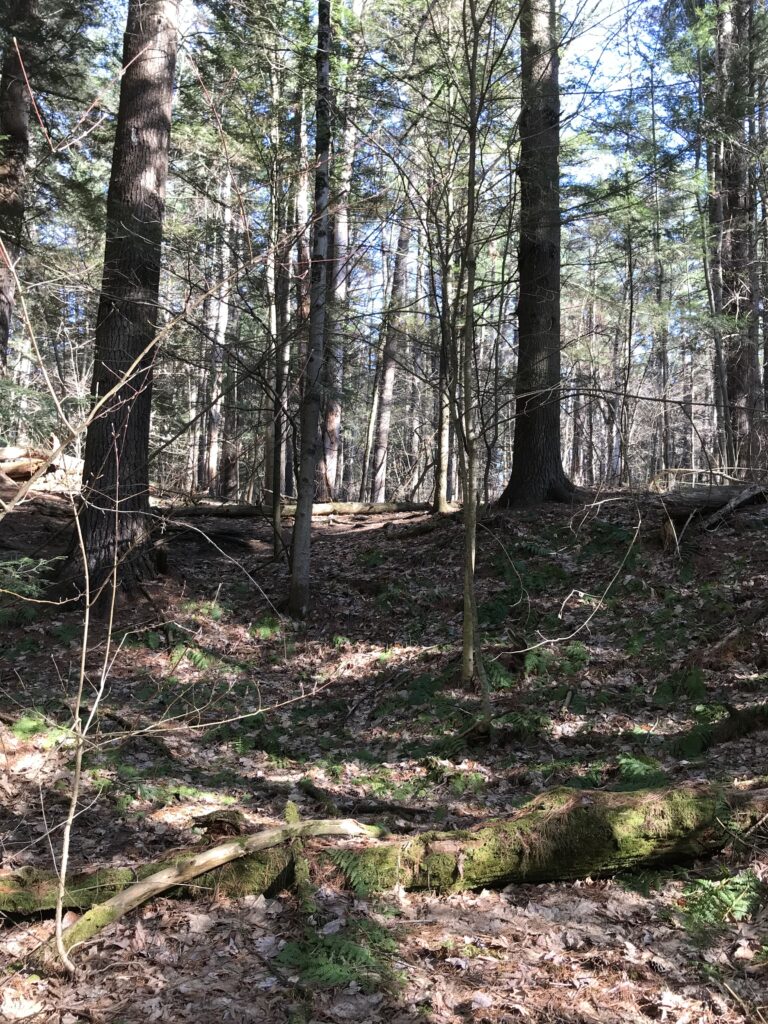

We ended our walk with one last sight to behold before we headed back the way we came…a bunch of huge trees that fell over!
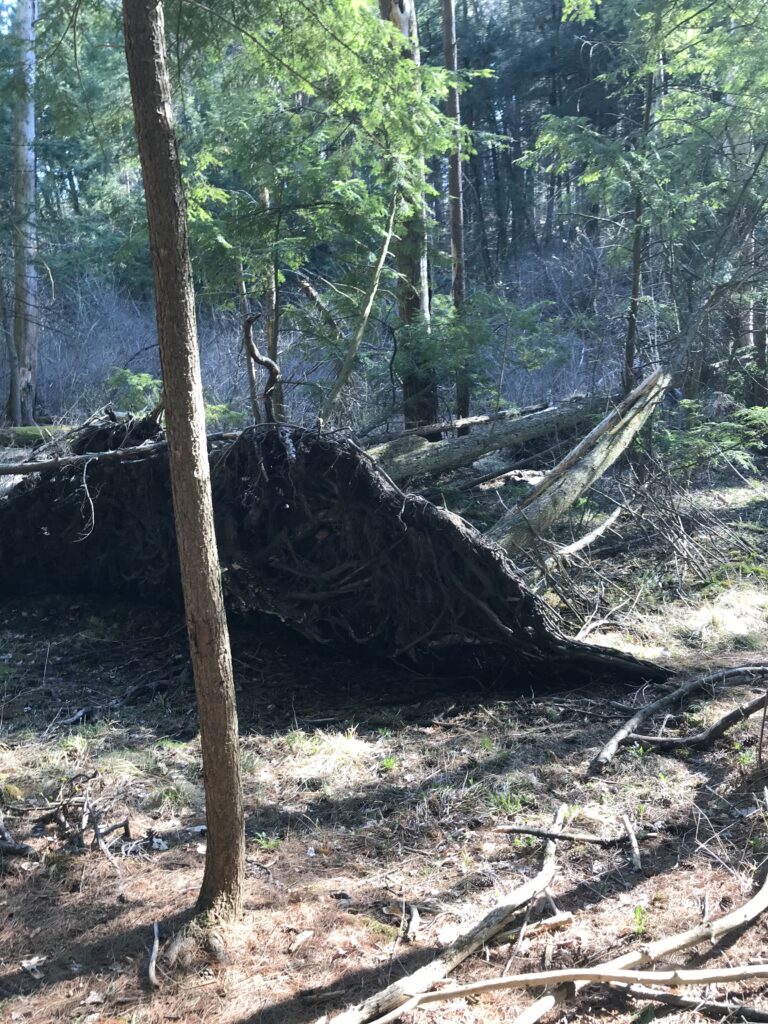
It was so strange seeing so many thick, old roots above ground. The soil the trees had been sitting on was lifted up and it reminded me of a huge carpet.
It was a beautiful day and a very fun little adventure!
